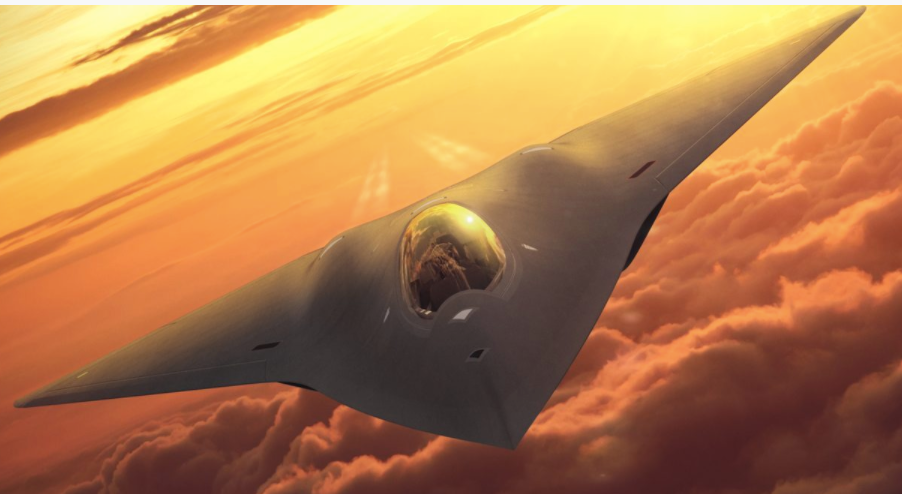
DAYTON, Ohio — After months of hinting at a disruption in the program, the US Air Force has formally decided to “pause” its effort to field a new stealth fighter, according to Secretary Frank Kendall.
“We’re taking a pause there,” Kendall said today at the Life Cycle Industry Days conference here. “With the platform itself, we’re taking a pause. With the rest of the elements of the air dominance family of systems, we’re moving forward as fast as we can.”
Kendall did not precisely specify how long the service’s plans to field the Next Generation Air Dominance (NGAD) fighter may be pushed out, casting the pause as consistent with previous comments on taking a “hard look” at the jet’s design. But he did share that officials are “tak[ing] a few months right now to figure out whether we’ve got the right design and make sure we’re on the right course.”
And though the service’s seeming cold feet have prompted some to fear an outright cancellation, Kendall batted down those concerns. “I’m absolutely confident we’re still going to do a sixth-generation crewed aircraft,” he said.
Even a slight pause could be unwelcome news to aerospace giants Boeing and Lockheed Martin, the primes believed to be competing for the lucrative NGAD contract. A separate effort involving manufacturers GE Aerospace and Pratt & Whitney is also underway to develop the fighter’s engine, though Kendall did not discuss any delays with the parallel engine program.
Notably, Kendall emphasized that while the Air Force is still prioritizing NGAD as a manned aircraft, the service is actively considering whether it could have an unmanned option as well, saying today, “There’s a chance it might be uncrewed … but I think we’re not quite ready for that yet. And we could always do something like an optional crewed platform.” (Kendall first raised the idea of an unmanned NGAD version in a July 20 interview with Breaking Defense.)
The Air Force’s indecision on NGAD has primarily been driven by budgetary constraints combined with concerns about the rapid pace of technological innovation, particularly by America’s adversaries, Kendall has said in recent months. The Air Force previously aimed to award an NGAD contract award this year, though delays could throw that goal into doubt. Reuters previously reported that the program could see a development be extended by as long as two years.
The expected replacement for the fifth-generation F-22 roughly a decade in the making, officials like Kendall previously described the sixth-generation NGAD fighter as a “vital element” of the “family of systems” the service envisioned to dominate rival militaries, namely China. Included in that family of systems to work with the fighter is the Air Force’s drone wingmen known as Collaborative Combat Aircraft (CCA), which Kendall said are “moving forward.”
But when it comes to the NGAD platform, Air Force officials have recently began to publicly waver on their commitment to its design, presaging its postponement.
The first signs of trouble came from Air Force Chief of Staff Gen. David Allvin, who would not commit to fielding the fighter when pressed at a public event on June 13. Shortly thereafter, Aviation Week published an interview with Kendall, who said officials have to be “open-minded” about the program due to funding constraints.
And, Kendall previously told Breaking Defense, the service is looking at the overall cost of the platform. The Air Force has many competing priorities, including the B-21 Raider and the Sentinel ICBM, with costs for the latter program ballooning.
In a June roundtable with reporters, Allvin explained that beyond funding constraints, the pace of technological evolution revealed by the service’s related drone wingman effort has prompted second thoughts. Specifically, Allvin detailed how platforms that are “built to last” may no longer be relevant, an approach embodied by the service’s plans to quickly field successive iterations of CCA.
“We don’t tack on extra requirements like Christmas tree ornaments that make them so much more expensive. We don’t add a sustainment tail that you have to build a depot structure [for] and you’re going to have block upgrades and everything — no, because the assumption is that the technology is going to move fast enough that if you can fit that technology into the current form factor because it’s modular, great. If not, put that aside,” Allvin said of CCA.
The swift ascent of AI is also likely influencing the Air Force’s fluctuating outlook. Earlier this year, the Air Force and the Defense Advanced Research Projects Agency (DARPA) announced a “world first” after an F-16 piloted by a computer successfully simulated a dogfight against a manned fighter. Kendall later flew in the AI-equipped aircraft himself, describing it as putting on “roughly an even fight” against a seasoned pilot.
“It’s at the time in any program where you really have your last chance to think very carefully about, ‘Have I really got the right design here? Is this the right concept? Is it the right operational concept? Is it the right program concept, design concept,” Kendall said today. “And so before we commit to moving forward on a single design and a single supplier, we want to take a hard look at that program and make sure it’s right.”
A Question Of Power, And What Comes Next
Even with a short-term delay, the Air Force is now the second service to push out its plans for a next-gen fighter, after the Navy in its fiscal 2025 budget request postponed development of its own sixth-gen platform in favor of near-term investments. Boeing, Lockheed and Northrop Grumman alongside engine primes GE and Pratt are actively competing for the Navy’s fighter — the F/A-XX platform — that is expected to replace the F/A-18. (Northrop CEO Kathy Warden said in a recent earnings call that a contract award is still expected next year, though the Navy declined to comment on the timeline when contacted by Breaking Defense.)
It’s unclear if any NGAD delays could throw a wrench into the fighter’s related engine development effort, where GE and Pratt have been facing off. Called Next Generation Adaptive Propulsion (NGAP), the NGAD’s engine is expected to use “adaptive” turbofan technologies that can adjust how air flows through the powerplant in flight, altering what’s known as its bypass ratio to improve features like thrust and fuel efficiency. With existing adaptive prototypes already viewed by some as the most advanced jet engines ever built, the Air Force will now have to decide how to keep moving adaptive technology forward, as propulsion can make or break leaps in aviation.
In a briefing with reporters here Monday, Air Force propulsion chief John Sneden said that the service is weighing tradeoffs between cost and capability, though he noted that the engine design is “agnostic” to available platforms.
“But I will also say that carrying forward and advancing our propulsion technology is also equally critical, and it takes us about 10 to 15 years to get new propulsion technology on the shelf, which means that we have to lean into this right now to be able to drive those outcomes for the future,” he added.

